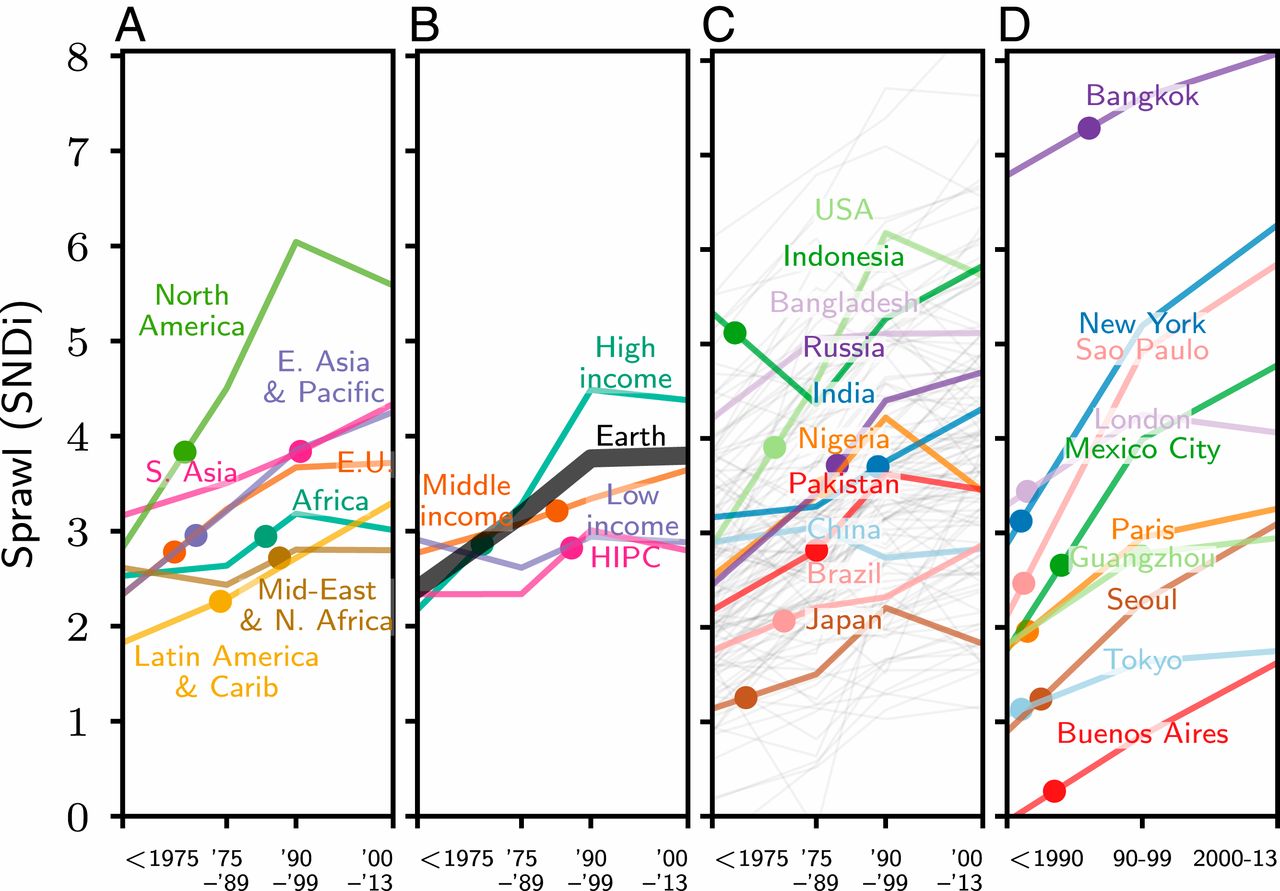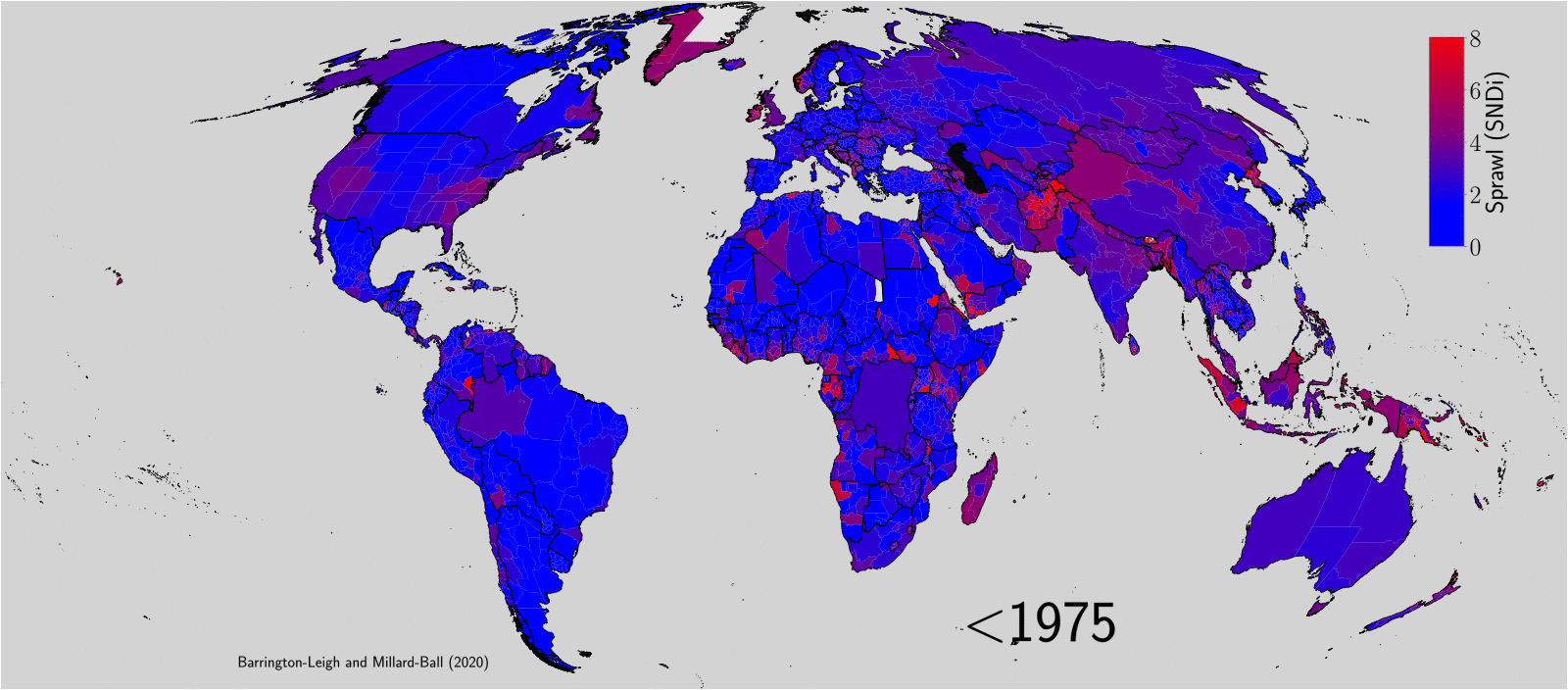Global trends toward urban street-network sprawl
The world is sprawling out. This one of the findings of a fascinating new paper that measures urban sprawl based on the local connectivity of street networks using. The authors combine OpenStreetMap data with satellite data to analyze the extent to which human settlements have sprawled since 1975 at a global, national, and city levels. The supplemantary material includes Python code used in the paper, and the data outputs + interactive website. Thanks Sabrina Lai for the pointer.

Barrington-Leigh, C., & Millard-Ball, A. (2020). Global trends toward urban street-network sprawl. Proceedings of the National Academy of Sciences. 117 (4) 1941-1950 https://doi.org/10.1073/pnas.1905232116
Abstract
We present a global time series of street-network sprawl—that is, sprawl as measured through the local connectivity of the street network. Using high-resolution data from OpenStreetMap and a satellite-derived time series of urbanization, we compute and validate changes over time in multidimensional street connectivity measures based on graph-theoretic and geographic concepts. We report on global, national, and city-level trends since 1975 in the street-network disconnectedness index (SNDi), based on every mapped node and edge in the world. Streets in new developments in 90% of the 134 most populous countries have become less connected since 1975, while just 29% show an improving trend since 2000. The same period saw a near doubling in the relative frequency of a street-network type characterized by high circuity, typical of gated communities. We identify persistence in street-network sprawl, indicative of path-dependent processes. Specifically, cities and countries with low connectivity in recent years also had relatively low preexisting connectivity in our earliest time period. We discuss implications for policy intervention in road building in new and expanding cities as a top priority for sustainable urban development.
